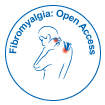Qigong, Parasympathetic Function and Fibromyalgia
Received Date: Feb 11, 2016 / Accepted Date: Mar 15, 2016 / Published Date: Mar 18, 2016
Abstract
Fibromyalgia (FM) is characterized by widespread pain and multiple other symptoms; underlying mechanisms include central sensitization, dysregulation of the stress response system, and autonomic nervous system dysregulation. Alterations in the sympathetic nervous system have been variably implicated, but a reduction in parasympathetic nervous system (PNS) activity is now becoming more clearly implicated. Qigong, a traditional health and wellness practice that is also considered as mindful exercise or meditative movement, has been shown in several controlled and uncontrolled trials to be of marked benefit in FM, with effects that are sustained over time. Several hypotheses have been considered to account for the benefits of qigong practice, including autonomic regulation. The current article proposes that qigong, as a self-practice, leads to enhanced PNS activity, and this underlies benefits in FM and contributes to other health benefits that occur with extended practice. This hypothesis could be tested: (a) by exploring benefits of non-invasive vagal nerve stimulation (this should mimic effects of qigong), (b) by demonstrating that qigong practice produces changes in PNS activity, (c) by demonstrating that other non-pharmacological therapies that have been shown to be of benefit in FM also modulate PNS activity. The hypothesis is amenable to direct testing.
Citation: Sawynok J (2016) Qigong, Parasympathetic Function and Fibromyalgia. Fibrom Open Access 1: 107.
Copyright: ©2016 Sawynok J. This is an open-access article distributed under the terms of the Creative Commons Attribution License, which permits unrestricted use, distribution, and reproduction in any medium, provided the original author and source are credited.
Select your language of interest to view the total content in your interested language
Share This Article
Open Access Journals
Article Usage
- Total views: 15100
- [From(publication date): 6-2016 - Dec 18, 2025]
- Breakdown by view type
- HTML page views: 14005
- PDF downloads: 1095
